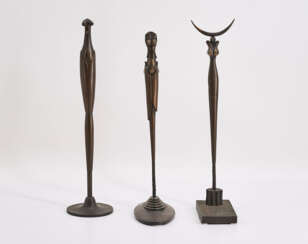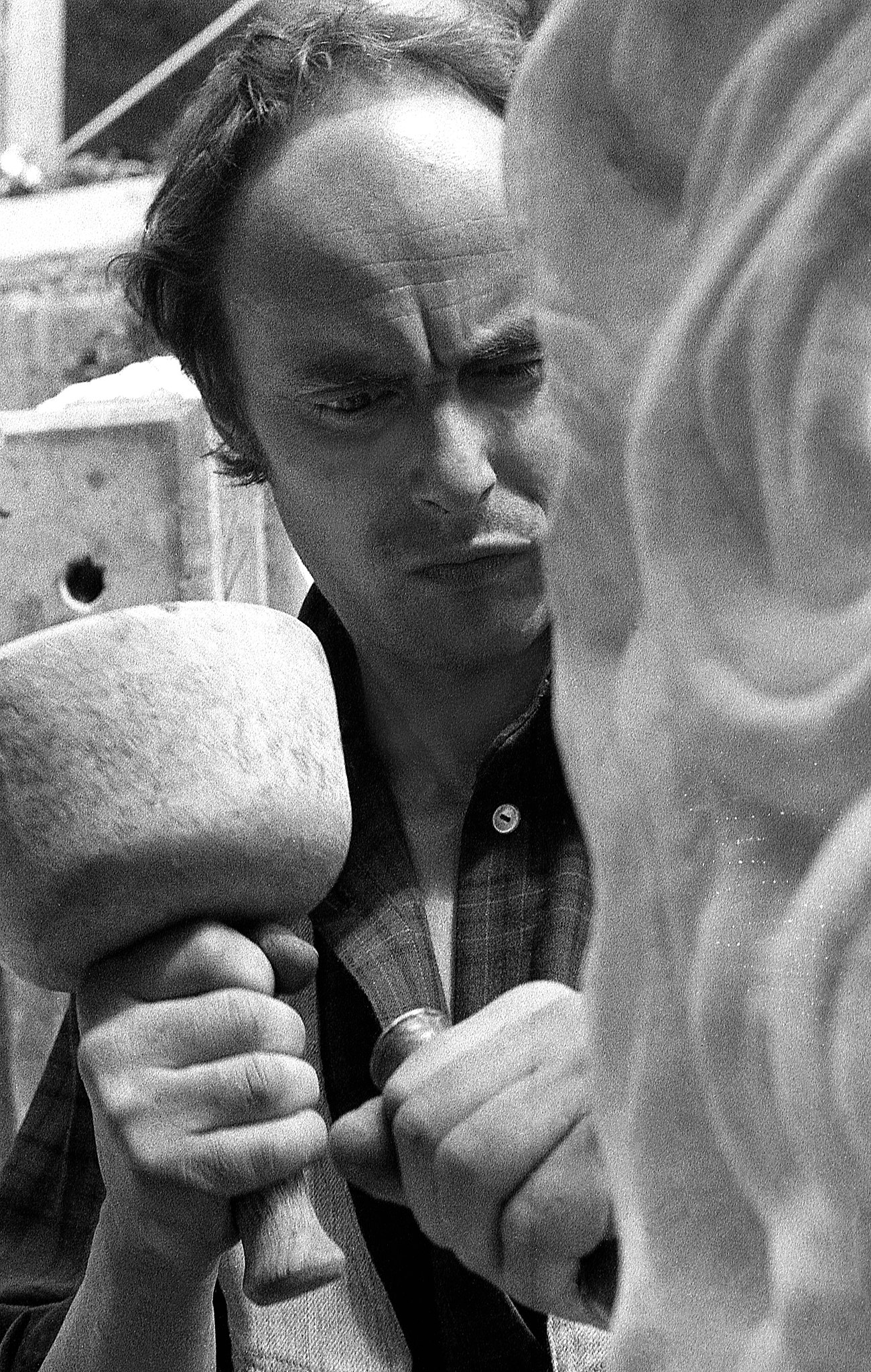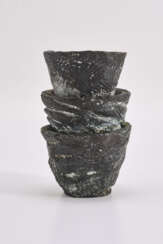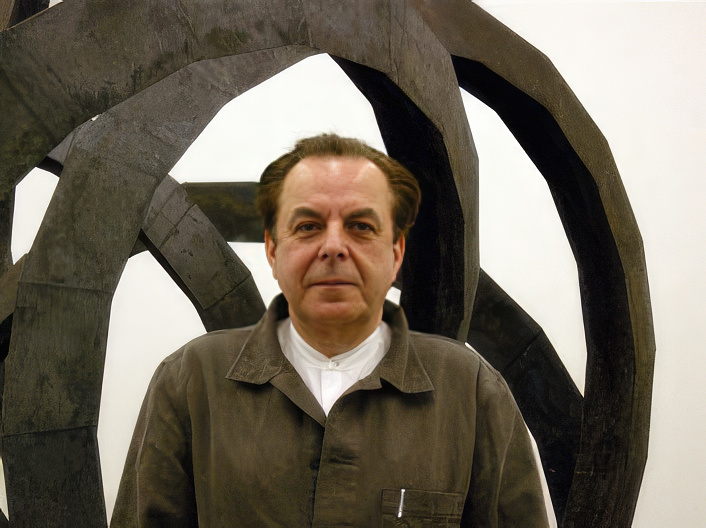послевоенные скульптуры

Dan Flavin was an American minimalist artist known for his use of fluorescent light as a medium. Flavin's work explored the aesthetic possibilities of industrial materials and the interaction between light, space, and color.
Flavin studied art at Columbia University. He began creating his iconic light installations in the 1960s, using commercial fluorescent tubes of various sizes and colors to create complex arrangements of light and shadow.
Many of Flavin's works were site-specific, designed to respond to the architecture and spatial dynamics of the exhibition space. Some of his most famous installations include "Monument for V. Tatlin" (1969), a tribute to the Russian Constructivist artist Vladimir Tatlin, and "Untitled (Marfa Project)" (1996), a permanent installation of colored fluorescent light in Marfa, Texas.
Flavin's work was recognized with numerous awards and honors, including the Guggenheim Fellowship and the Skowhegan Medal for Sculpture. He exhibited his work extensively in the United States and Europe, and his installations continue to be celebrated as seminal examples of minimalist and conceptual art.
Flavin's legacy as a pioneering artist continues to inspire new generations of artists working with light and other non-traditional materials.
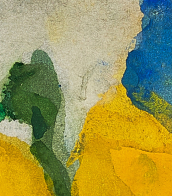

Dan Flavin was an American minimalist artist known for his use of fluorescent light as a medium. Flavin's work explored the aesthetic possibilities of industrial materials and the interaction between light, space, and color.
Flavin studied art at Columbia University. He began creating his iconic light installations in the 1960s, using commercial fluorescent tubes of various sizes and colors to create complex arrangements of light and shadow.
Many of Flavin's works were site-specific, designed to respond to the architecture and spatial dynamics of the exhibition space. Some of his most famous installations include "Monument for V. Tatlin" (1969), a tribute to the Russian Constructivist artist Vladimir Tatlin, and "Untitled (Marfa Project)" (1996), a permanent installation of colored fluorescent light in Marfa, Texas.
Flavin's work was recognized with numerous awards and honors, including the Guggenheim Fellowship and the Skowhegan Medal for Sculpture. He exhibited his work extensively in the United States and Europe, and his installations continue to be celebrated as seminal examples of minimalist and conceptual art.
Flavin's legacy as a pioneering artist continues to inspire new generations of artists working with light and other non-traditional materials.


Horst Gläsker is a German universal artist.
Gläsker studied first as a designer, then at the Düsseldorf Academy with Gerhard Richter and K. Götz. Glesker has played a decisive role in shaping the art world of Germany and especially Düsseldorf since the 1980s. His work is a symbiosis of music, dance, theater, drawing, painting, sculpture, installation and architecture. This artist blurs the boundaries of art and works across media and disciplines.
Gläsker combines his installations with architecture, for example, like his works in public spaces in Frankfurt, Oberhausen and Erfurt. In another direction of his work, the artist combines various paintings with photography and creates photographic paintings. In this process he also collaborates with renowned photographers.
Horst Gläsker has worked as a professor at the Kunstakademie Münster, the Braunschweig University of the Arts and the Kassel Art College. Since 2006 Glesker lives in Düsseldorf and is a member of the Association of German Artists.

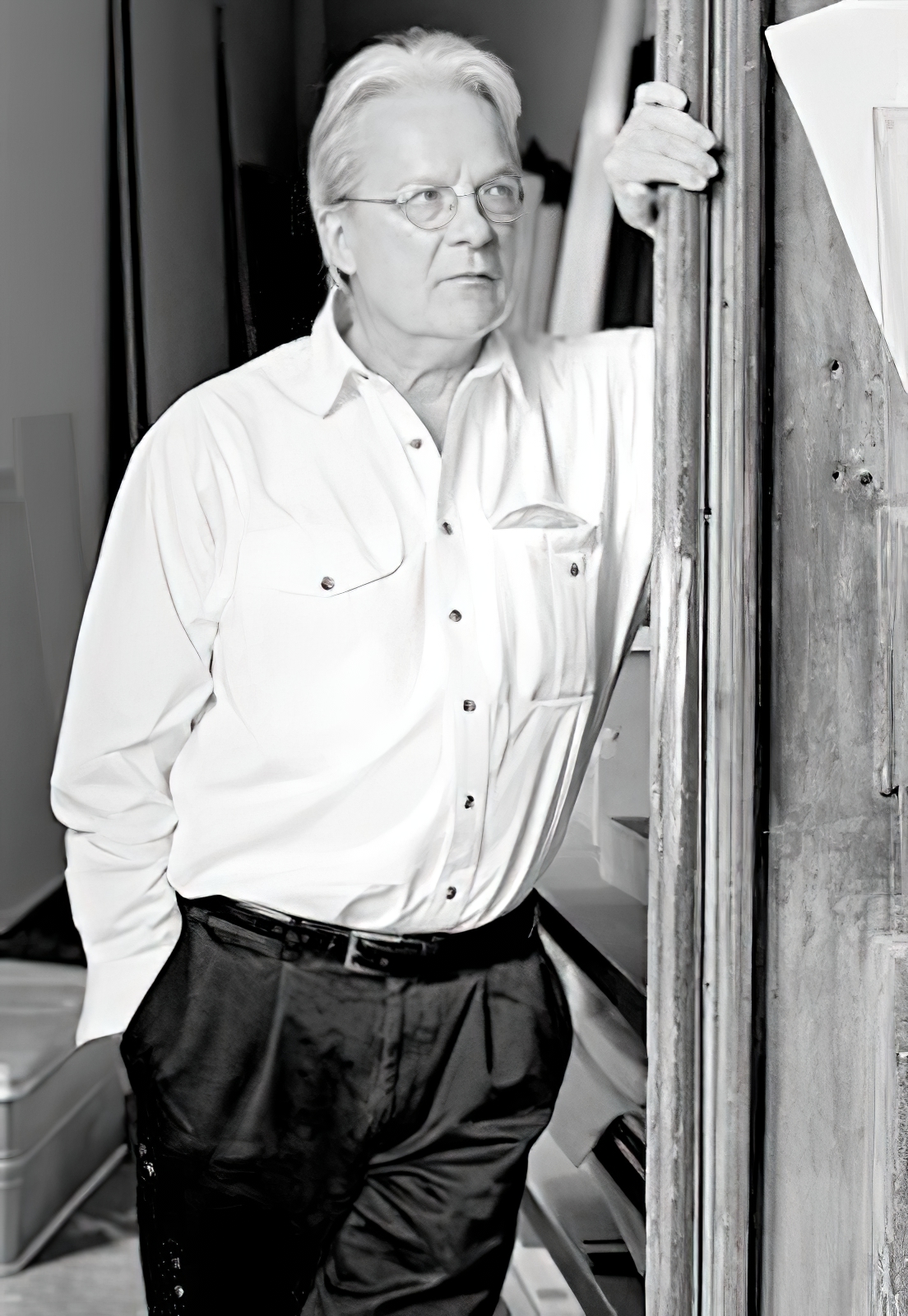
Imi Knoebel (born Klaus Wolf Knoebel) is a German artist. Knoebel is known for his minimalist, abstract painting and sculpture. The "Messerschnitt" or "knife cuts," are a recurring technique he employs, along with his regular use of the primary colors, red, yellow and blue. Knoebel lives and works in Düsseldorf.


Wolf Vostell was a German artist who is considered a pioneer of video and installation art, and a key figure in the Fluxus movement. He studied at the Academy of Fine Arts in Wuppertal and later at the École Nationale Supérieure des Beaux-Arts in Paris.
Vostell's art was heavily influenced by the horrors of World War II, and he often incorporated themes of violence and destruction in his work. He was interested in exploring the relationship between art and technology, and he experimented with new media such as television, video, and sound.
One of Vostell's most famous works is "Concrete Traffic," a 1970 installation in which he placed a Cadillac in a block of concrete. The piece was intended to comment on the impact of automobile culture on society and the environment.
Another notable work is "TV-Burying," a performance piece in which Vostell buried a television set in the ground, with only the screen visible. The work was a commentary on the pervasive influence of television on modern life.
Vostell's work has been exhibited extensively around the world, including at the Museum of Modern Art in New York, the Venice Biennale, and the Centre Georges Pompidou in Paris.


Franz Erhard Walther is a German artist (sculptor, conceptual, installation and process artist).


Franz Erhard Walther is a German artist (sculptor, conceptual, installation and process artist).


Bernard Schultze was a German painter who co-founded the Quadriga group of artists along with Karl Otto Götz and two other artists.


Ernst Fuchs was an Austrian painter, draftsman, printmaker, sculptor, architect, stage designer, composer, poet, and one of the founders of the Vienna School of Fantastic Realism. In 1972, he acquired the derelict Otto Wagner Villa in Hütteldorf, which he restored and transformed. The villa was inaugurated as the Ernst Fuchs Museum in 1988.


Paul Wunderlich was a German painter, sculptor and graphic artist. He designed Surrealist paintings and erotic sculptures. He often created paintings which referred to mythological legends.


Claus Otto Paeffgen is a modern German artist, a representative of primitivism and naive art.


Paul Wunderlich was a German painter, sculptor and graphic artist. He designed Surrealist paintings and erotic sculptures. He often created paintings which referred to mythological legends.


Paul Wunderlich was a German painter, sculptor and graphic artist. He designed Surrealist paintings and erotic sculptures. He often created paintings which referred to mythological legends.


Igor Mitoraj, a renowned Polish sculptor, was celebrated for his unique approach to sculptural art, which combined classical techniques with modernist interpretations. Igor Mitoraj's artistic journey led him across Europe, studying under notable figures such as Tadeusz Kantor at the Krakow Academy of Fine Arts before expanding his horizons in Paris and Italy.
Igor Mitoraj's works are distinguished by their classical inspiration, often focusing on the human body's beauty and fragility. Yet, he introduced a contemporary twist by presenting his figures as fragmented or truncated, a nod to the imperfections and vulnerabilities inherent in human nature. This stylistic choice not only set him apart in the art world but also allowed him to explore deeper themes of human experience and existential reflection.
His sculptures, often large-scale, are displayed in public spaces across the globe, from the streets of European cities to the ruins of Pompeii, where his piece "Daedalus" stands as a testament to his artistic legacy. Igor Mitoraj's influence extends beyond public installations, with his works featured in various prestigious exhibitions and collections, illustrating a career marked by a commitment to exploring the human condition through art.
For art collectors and enthusiasts interested in Mitoraj's work, staying informed about upcoming sales and auction events can provide unique opportunities to acquire pieces by this influential artist. Subscribing to updates related to Igor Mitoraj can ensure you're always in the know about new offerings and events celebrating his artistic contributions.


Günter Ferdinand Ris is a contemporary German artist and sculptor.


Brigitte Matschinsky-Denninghoff was a German artist who worked with her husband Martin. She is known for her monumental abstract sculptures.



























